Sofa vs. Couch: Unraveling the Distinct Differences for Your Perfect Home Decor
In the vast world of home decor, few pieces of furniture command as much attention and discussion as the primary seating in a living space. Often, the terms “couch” and “sofa” are used interchangeably, leading to widespread confusion. While both refer to a comfortable, upholstered piece designed for multiple people to sit upon, their origins, traditional functions, and subtle design cues offer fascinating insights into their distinct identities. Understanding these nuances can not only elevate your interior design vocabulary but also guide you in selecting the perfect piece that truly complements your home and lifestyle.
Whether you’re furnishing a new home, redecorating a beloved room, or simply curious about the subtle distinctions, join us as we delve into the etymology, design characteristics, and practical applications that set a sofa apart from a couch. We’ll explore how these seemingly synonymous terms carry different connotations and serve varied purposes within the realm of comfortable seating.
What is a Sofa?
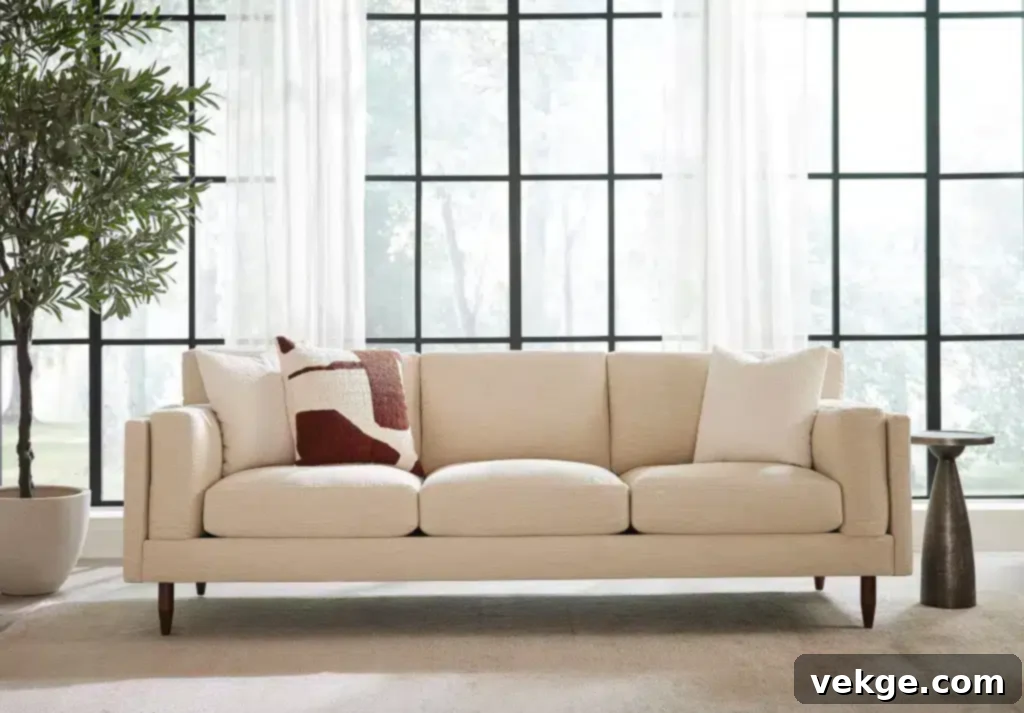
The word “sofa” boasts a rich history, tracing its origins back to the Arabic word “suffah.” This term originally referred to a raised platform, often covered with luxurious carpets and cushions, used for formal seating in Middle Eastern homes. This historical context immediately imbues the modern sofa with a sense of dignity and formality.
In contemporary interior design, a sofa is typically seen as a more formal and structured piece of furniture. It is designed primarily for sitting upright, engaging in conversation, and entertaining guests. Sofas often feature a more tailored appearance with defined lines, firm cushions, and prominent armrests. They are crafted to be visually commanding, serving as the focal point of a well-appointed room.
A sofa’s primary aim is to present an elegant aesthetic and provide comfortable yet respectful seating for visitors and family alike. It often embodies a particular design style, from the classic Chesterfield with its tufted back and rolled arms, to the sleek, minimalist lines of a modern Tuxedo sofa. Upholstery choices for sofas typically lean towards more refined fabrics like leather, velvet, linen, or high-quality woven textiles, reflecting its sophisticated purpose. You’ll commonly find sofas gracing formal living rooms, reception areas, and upscale offices, where their presence commands a certain level of admiration and sets a tone of refined hospitality.
What is a Couch?
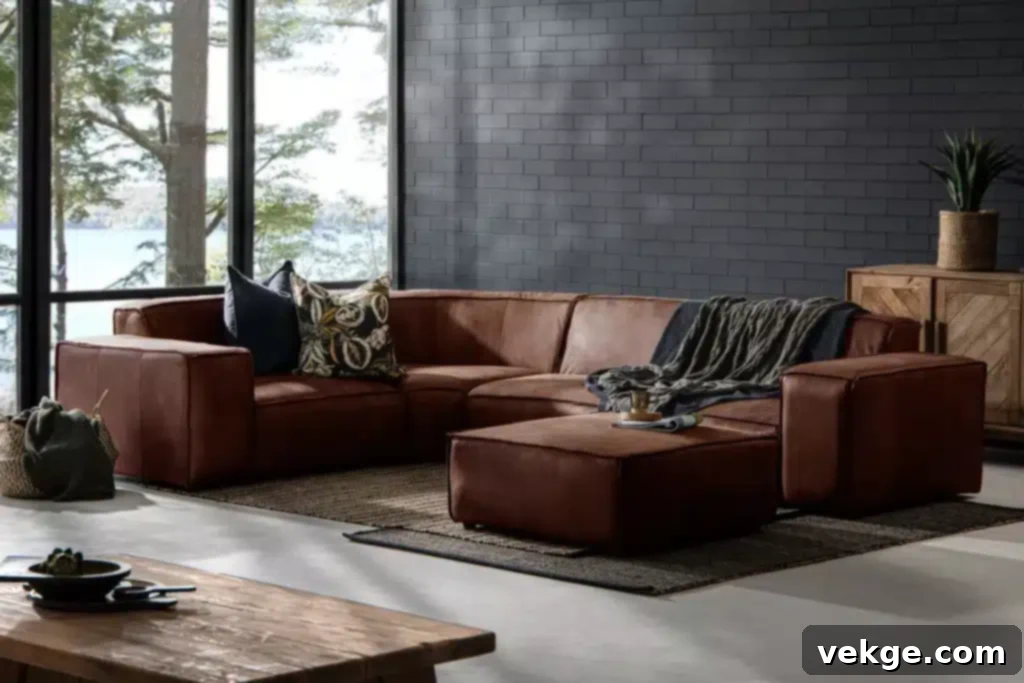
In contrast to the sofa’s formal lineage, the word “couch” hails from the Old French verb “coucher,” meaning “to lie down” or “to recline.” This etymological root immediately suggests a more relaxed and informal function, perfectly aligning with our modern perception of a couch.
When we envision a couch, we typically picture a piece of furniture designed for ultimate comfort and casual relaxation. Couches are built for sprawling, napping, watching movies, and generally unwinding after a long day. They often feature deep seats, plush cushions that invite sinking in, and a less rigid structure than a traditional sofa. While many couches do have armrests, it’s not uncommon to find styles that are armless or feature softer, more rounded arms, further emphasizing their laid-back appeal.
A couch is the quintessential piece for family rooms, dens, media rooms, or even spacious bedrooms, where personal comfort takes precedence over formal presentation. It’s the go-to spot for cuddling with pets, gathering for casual conversations with friends, or simply enjoying a quiet moment to yourself. The upholstery for couches tends to be more durable and family-friendly, often in comfortable, washable fabrics that can withstand everyday use. While a sofa aims to impress, a couch aims to envelop you in warmth and ease, becoming a central hub for informal activities and personal downtime.
How Is A Sofa Different From A Couch?
While the terms “sofa” and “couch” are often used interchangeably in everyday language, there are subtle yet significant differences that distinguish them in the world of interior design and furniture lexicon. Understanding these distinctions can help you make a more informed decision when furnishing your home.
1. Design and Aesthetics
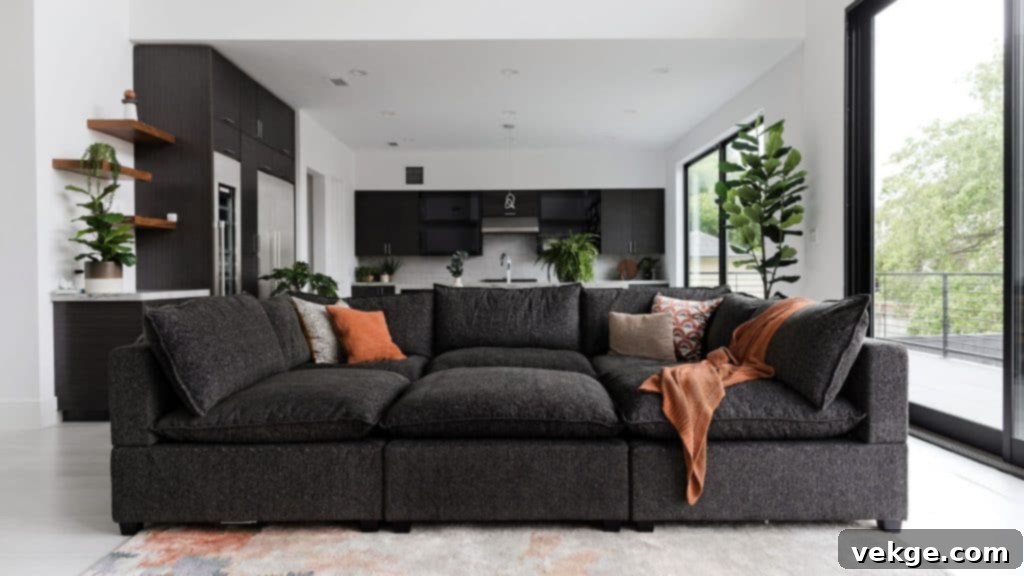
The most discernible differences often lie in their design language. A sofa is characterized by its structured, often more tailored appearance. It typically features clean lines, defined backs, and distinct armrests. Cushions on a sofa tend to be firmer, providing support for an upright posture, and often maintain their shape more rigorously. The overall aesthetic of a sofa is one of sophistication and permanence, designed to make a statement and elevate the room’s formal appeal. Think of classic styles like the Chesterfield, Lawson, or English Roll Arm, which exude elegance and symmetry.
A couch, conversely, prioritizes plushness and an inviting softness. Its design is often less rigid, featuring deeper seats, softer, more yielding cushions, and sometimes a lower back or less defined armrests. The lines might be more relaxed, emphasizing comfort over strict formality. Modular or sectional pieces, often designed for lounging, are more commonly associated with couches. Their relaxed form invites one to sink in and get comfortable, making them suitable for informal, cozy settings. The aim is a “lived-in” feel rather than a pristine display.
2. Placement and Purpose
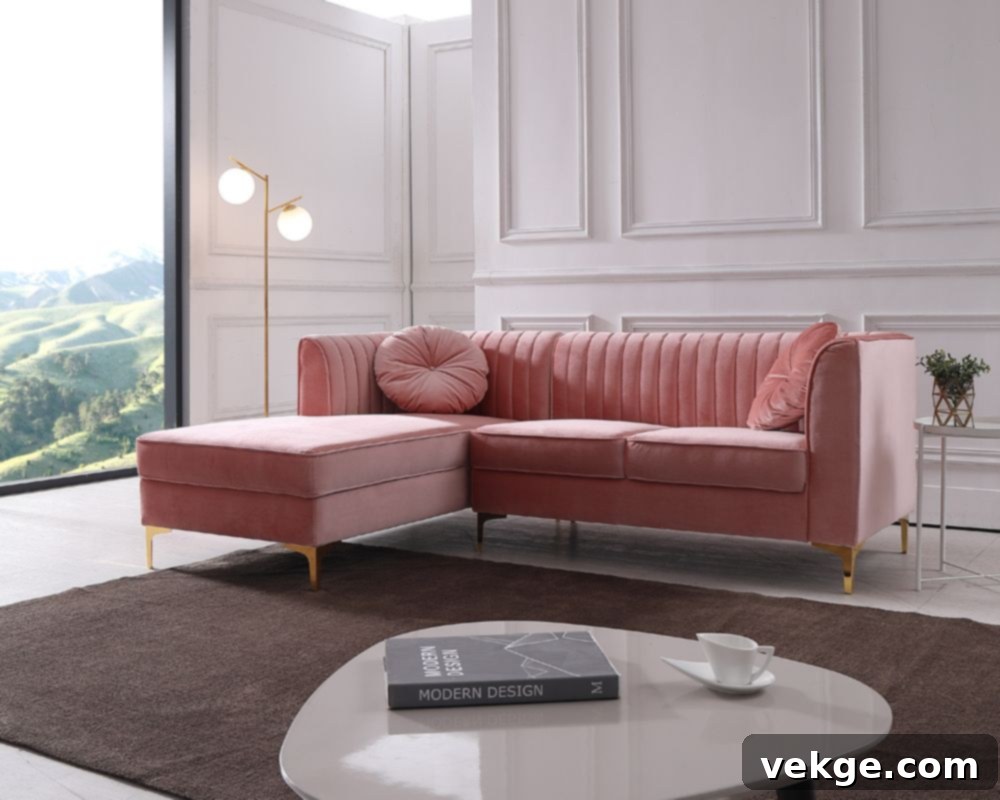
Another key differentiator is where these pieces typically reside and the role they play. A sofa is traditionally found in a formal living room, an area often reserved for entertaining guests, hosting refined gatherings, or simply showcasing the home’s more elegant side. Its purpose is largely aesthetic and social, providing structured seating for polite conversation and a backdrop for sophisticated decor. It acts as a primary, often central, piece in such a setting.
A couch, on the other hand, is a staple of more casual, high-traffic areas within the home. This includes family rooms, dens, media rooms, basements, or even large master bedrooms. Here, the priority is daily comfort and relaxation for family members and close friends. A couch encourages lounging, stretching out, and informal activities like movie nights, reading, or napping. It’s often adorned with snuggly blankets and an abundance of throw pillows, creating an inviting oasis of comfort. Its versatility also means it can serve as a convenient extra sleeping space for overnight guests.
3. Functionality and Connotation
Beyond design and placement, the inherent function and cultural connotation also set sofas and couches apart. The term “sofa” tends to evoke images of sophistication, elegance, and a sense of polite gathering. It’s a piece you might buy to impress or to complete a meticulously planned formal interior. Sofas are built for durability and maintaining their refined appearance over time, often upholstered in premium, sometimes delicate, fabrics.
The term “couch,” conversely, carries a more laid-back, welcoming, and intimate connotation. It’s a piece you choose for unwinding, for personal comfort, and for creating a relaxed atmosphere. Couches are designed to withstand the rigors of daily life, often featuring sturdy frames and resilient, easy-to-clean fabrics. Their purpose is primarily about individual and family comfort, offering a space to truly ‘let go’ and relax without formality. Think “Netflix and chill” versus “cocktail hour.”
Which Style Would Look Perfect in Your Home?
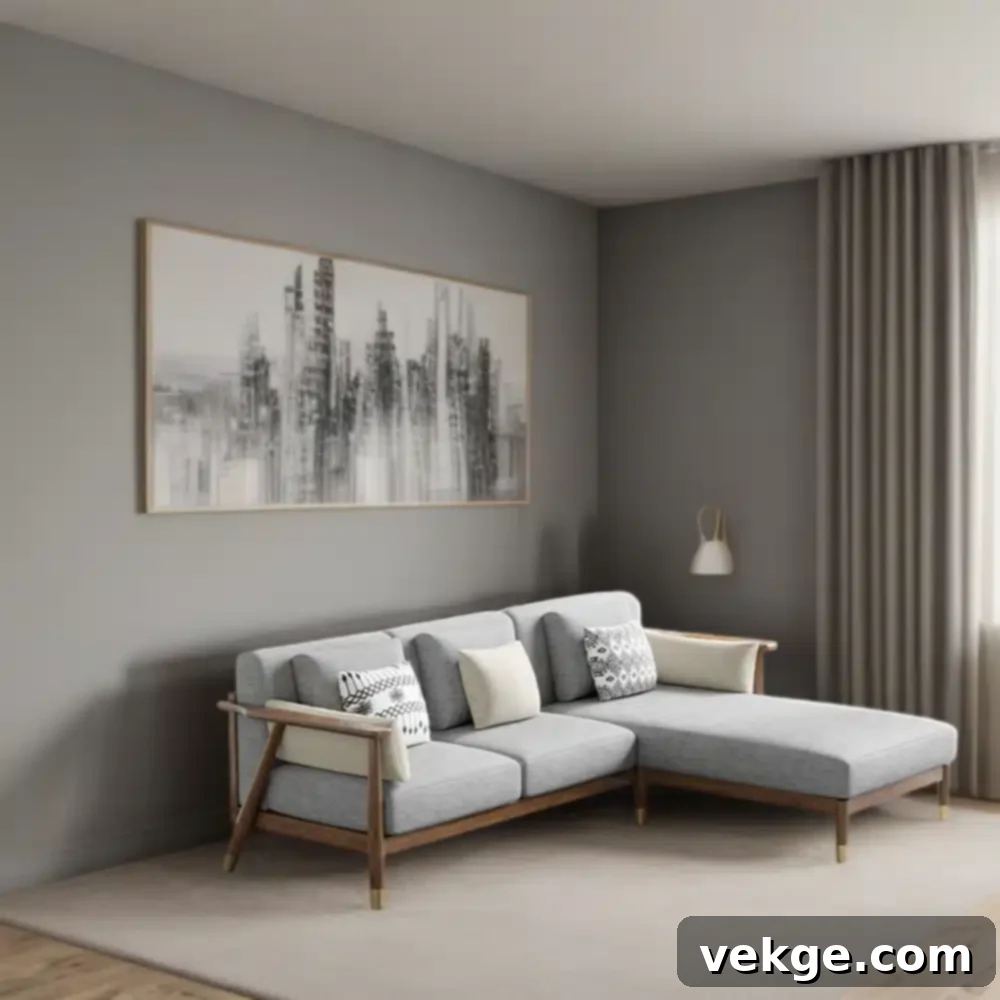
Choosing between a sofa and a couch for your home hinges entirely on your specific needs, lifestyle, and the intended function of the space. It’s crucial to assess not just the size but also the overall aesthetic you wish to achieve and the level of comfort you prioritize.
If you’re furnishing a formal living room, an area dedicated to entertaining guests, or a space where you want to project a sense of sophistication and order, a sofa is likely your best choice. Its structured design, tailored upholstery, and elegant lines will serve as a beautiful focal point. A sofa complements traditional, classic, minimalist, or even some contemporary decor styles, adding a touch of refined grandeur. Consider one with a distinct silhouette, perhaps in a luxurious fabric like leather or a rich velvet, to truly make a statement. It encourages upright posture and engaging conversation, perfect for parties and formal gatherings.
Conversely, if you’re outfitting a family room, a cozy den, a media room, or a basement where relaxation is paramount, a couch will be your ideal companion. Its deep seats, plush cushions, and inviting form are perfect for lounging, napping, movie nights, or casual get-togethers. A couch thrives in environments where comfort trumps formality, encouraging you to put your feet up and unwind. Its relaxed aesthetic fits well with bohemian, rustic, casual contemporary, or eclectic decor. You can easily enhance its cozy appeal with an abundance of soft throw blankets and decorative pillows. It’s also an excellent choice if you frequently host overnight guests, as many couches offer ample space for temporary sleeping.
Ultimately, your decision should align with your daily routine, the people (and pets!) who will use the furniture, and the overall mood you want to create in the room. Don’t be afraid to mix and match; a formal sofa in one room and a plush couch in another can cater to different needs within the same home.
Other Types to Know More About
Beyond the primary distinction between sofas and couches, the world of upholstered seating offers a diverse array of options, each designed with specific functions and aesthetics in mind. While the terms “sofa” and “couch” can sometimes encompass these variations, knowing their specific names can help you pinpoint exactly what you need.
1. Loveseat
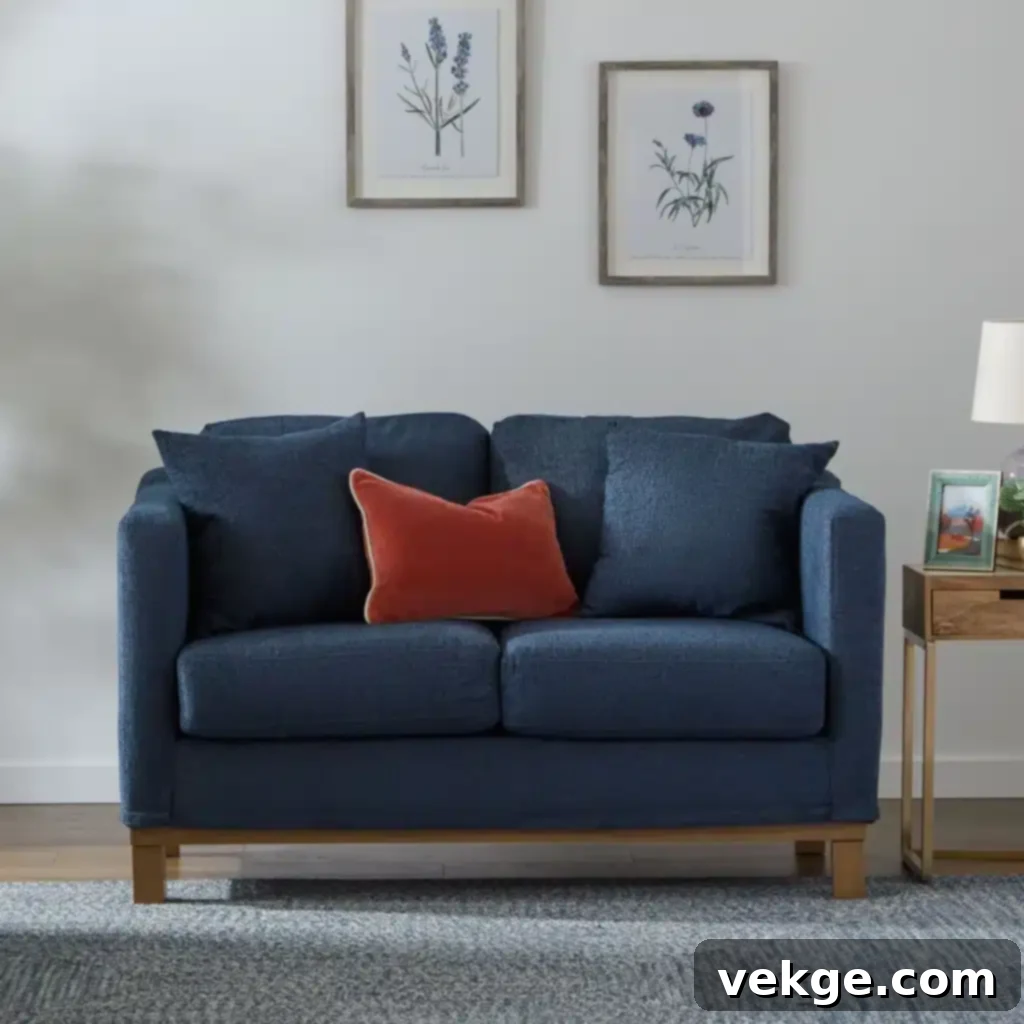
A loveseat is essentially a compact version of a sofa or couch, designed to comfortably seat two people. Ideal for smaller spaces, apartments, or as a secondary seating option in a larger room, a loveseat provides an intimate spot for conversation without taking up too much floor space. It can be paired with a larger sofa to complete a living room arrangement or used as a standalone piece in an entryway or cozy nook.
2. Divan
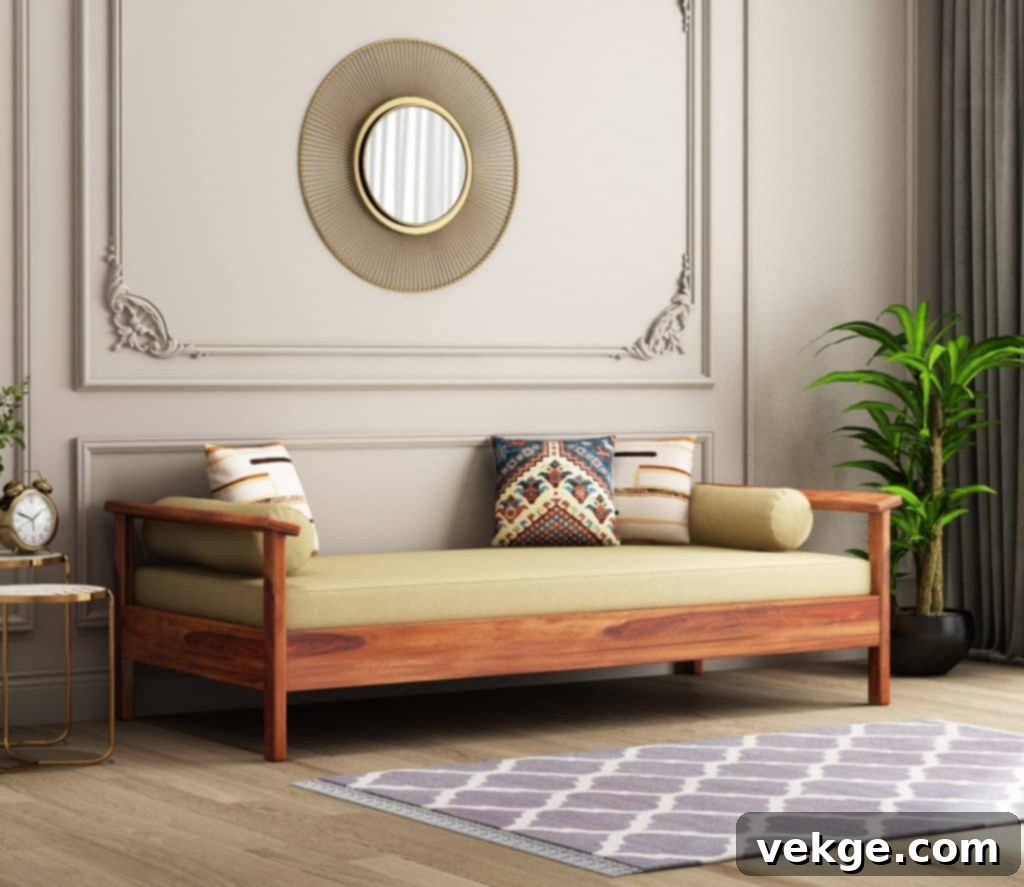
Historically, a divan was a long, backless, and often armless upholstered bench, typically pushed against a wall and adorned with pillows. Rooted in Persian and Ottoman culture, it served as a comfortable place for lounging or reclining. In modern contexts, a divan often functions similarly to a daybed, offering versatile seating and an occasional sleeping surface. Its minimalist design makes it suitable for contemporary spaces or areas where you want a flexible seating option that doesn’t obstruct views.
3. Sectional Sofa/Couch
A sectional is a multi-piece upholstered unit that can be arranged in various configurations, most commonly an L-shape or U-shape. These modular pieces typically include armless chairs, chaises, and corner units, allowing for customization to fit specific room layouts and seating needs. Sectionals are excellent for maximizing seating in large family rooms or open-concept living spaces, providing ample room for multiple people to lounge comfortably. They are the epitome of casual, communal seating and are often found in bustling households.
4. Chaise Lounge
Derived from the French for “long chair,” a chaise lounge is an elongated chair designed for reclining. It typically features a backrest and is long enough to support the legs, often without the need for an ottoman. Chaises are perfect for ultimate relaxation, reading, or simply stretching out. They can be a luxurious addition to a bedroom, a quiet corner in a living room, or even an outdoor patio, adding a touch of elegance and comfort.
5. Daybed
A daybed serves a dual purpose, functioning as both a sofa and a bed. It often has three sides (a back and two armrests) and can be dressed with pillows and throws to look like a sofa during the day, then easily converted into a bed for sleeping at night. Daybeds are an excellent solution for guest rooms, home offices, or small apartments where space is at a premium and versatility is key.
Summing It Up
Ultimately, whether you call it a sofa or a couch, these essential pieces of furniture are indispensable in creating comfortable and inviting homes. They serve as the focal point for relaxation, socialization, and often the aesthetic anchor of a room. While the terms are frequently used interchangeably, understanding their subtle historical and design distinctions can empower you to make more intentional choices for your living spaces.
A sofa, with its structured lines and formal demeanor, is ideal for creating an elegant, sophisticated ambiance, perfect for entertaining guests and formal gatherings. Conversely, a couch, with its plush comfort and relaxed appeal, is the heart of casual family living, encouraging lounging, napping, and intimate moments. The choice between either—or integrating various types—depends entirely on your lifestyle, the specific function of the room, and your personal preference for comfort and style. We hope this comprehensive guide illuminates the differences and helps you select the perfect seating solution that truly reflects your home’s character and your desired level of comfort. Let us know your decision in the comments below!
